
Imago
NFL, American Football Herren, USA NFC Wild Card Round-Minnesota Vikings at Los Angeles Rams Jan 13, 2025 Glendale, AZ, USA NFL commissioner Roger Goodell before the NFC wild card game between the Los Angeles Rams and the Minnesota Vikings at State Farm Stadium. Glendale State Farm Stadium AZ USA, EDITORIAL USE ONLY PUBLICATIONxINxGERxSUIxAUTxONLY Copyright: xMarkxJ.xRebilasx 20250113_mcd_su5_11

Imago
NFL, American Football Herren, USA NFC Wild Card Round-Minnesota Vikings at Los Angeles Rams Jan 13, 2025 Glendale, AZ, USA NFL commissioner Roger Goodell before the NFC wild card game between the Los Angeles Rams and the Minnesota Vikings at State Farm Stadium. Glendale State Farm Stadium AZ USA, EDITORIAL USE ONLY PUBLICATIONxINxGERxSUIxAUTxONLY Copyright: xMarkxJ.xRebilasx 20250113_mcd_su5_11
It was 3:30 p.m. on Monday, July 28. That golden hour when Manhattan offices hum with late-meeting energy and the workday’s end feels close. In the NFL’s headquarters at 345 Park Avenue, employees shuffled between floors, security guards changed shifts, and lobby traffic pulsed with afternoon visitors. Then the unthinkable: Shane Devon Tamura, 27, burst through the doors with an M4 rifle. Within minutes, ordinary workplace sounds gave way to emergency sirens as police swarmed the building. The attack claimed four innocent lives, including NYPD Officer Dadar al-Islam, who responded to the call.
Watch What’s Trending Now!
When the ordeal ended, Tamura was found dead inside the building from a self-inflicted gunshot wound. As investigators later confirmed, the gunman had specifically targeted the league’s offices, leaving behind troubling notes. Now, while the NFL community grieves and reevaluates security measures, the league faces its hardest test – not as a sports organization, but as part of a wounded community. Three days after the shooting at 345 Park Avenue, Commissioner Roger Goodell sat down with NBC’s Mike Tirico to address a shaken league and nation. The conversation revealed both the depth of the tragedy and the NFL’s resolve.
“It’s difficult,” Goodell acknowledged, his words reflecting the collective grief. “But I will tell you the outpouring of support we’ve had from people all over the world—from government leaders to partners, our players past and current, to teams, coaches, and owners—has been heartwarming. That’s good to know people are behind us.” At the heart of his message lay a promise. “We do believe the NFL brings people together, and we’ll continue that.” Not just empty words. The league swiftly backed those words with action.
ADVERTISEMENT
Commissioner Goodell joins Mike Tirico in the wake of the tragic act of violence in New York City.@SNFonNBC pic.twitter.com/SVzVyBeDS3
— NFL (@NFL) August 1, 2025
By Thursday, employees returned to 345 Park Avenue under tightened security. ESPN’s Adam Schefter reported the league had quietly expanded counseling services for staff and first responders, while teams independently observed moments of silence. Goodell’s statement underscored the broader stakes. “This attack is far more than on several individuals. This is an attack on humanity… our communities… New York… our way of life. We’re going to carry on, maybe with broken hearts, but we will carry on.” As investigators pieced together the timeline, troubling details about the gunman’s past began to surface—including a documented mental health history that raised more questions than answers.
ADVERTISEMENT
Roger Goodell leads the NFL through a crisis
Investigators carefully pieced together Shane Tamura’s final moments, and a key detail soon stood out. Though the 27-year-old Las Vegas casino worker had targeted the NFL headquarters, he ultimately took the wrong elevator. New York City Mayor Eric Adams later confirmed this critical detail to CNN. First, Tamura shot multiple people in the lobby. Then, tragically disoriented, he entered the incorrect elevator bank. Ultimately, this may have prevented even more violence.
Police found a three-page note in Tamura’s wallet. It focused on chronic traumatic encephalopathy (CTE). CTE is a brain disease linked to football injuries. The New York Times reviewed the handwritten pages. Tamura apologized repeatedly in the note. He requested his brain be studied for CTE. He referenced former NFL player Terry Long. Long died by su—e in 2005 after his CTE diagnosis. The note made claims against the NFL. It accused the league of hiding brain injury risks. But investigators found no proof. They said Tamura’s connection to football was just his obsession.
ADVERTISEMENT
“Mr. Tamura has a documented mental health history,” NYPD Commissioner Jessica Tisch told reporters. “His motives remain under investigation.” The revelation sent ripples through the league, where coaches like the Jets’ Aaron Glenn and Giants’ Brian Daboll opened press conferences by acknowledging the tragedy.
Top Stories
Sean Payton Announces Retirement Plans as Broncos HC Demands Improvement From Bo Nix & Co. Before Playoffs
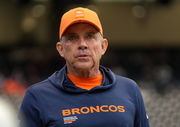
Dez Bryant Unloads on Jerry Jones & Cowboys Over ‘Blackmailing,’ Defends Micah Parsons in Negotiations
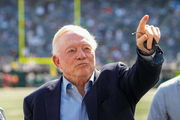
Philip Rivers Announces Retirement Decision After Colts Benched 44-YO QB
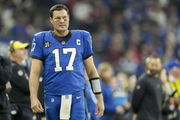
Sean McDermott Announces Bad News for Bills After Massive Update on Josh Allen’s Injury
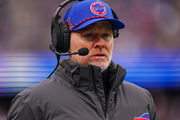
Former Packers QB Makes Decision on Shark Tank’s Offer for His $850K Business
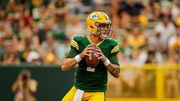
The NFL’s response echoed Roger Goodell’s earlier vow to “bring people together.” League officials privately coordinated counseling for employees while avoiding public tributes that might inflame the gunman’s fixation. Yet the tragedy forced uncomfortable questions about football’s legacy—ones the commissioner had addressed obliquely in his NBC interview: “This attacked our community’s way of life.” For now, the focus remained on the victims, their families, and the quiet work of investigators.
ADVERTISEMENT
ADVERTISEMENT
ADVERTISEMENT

